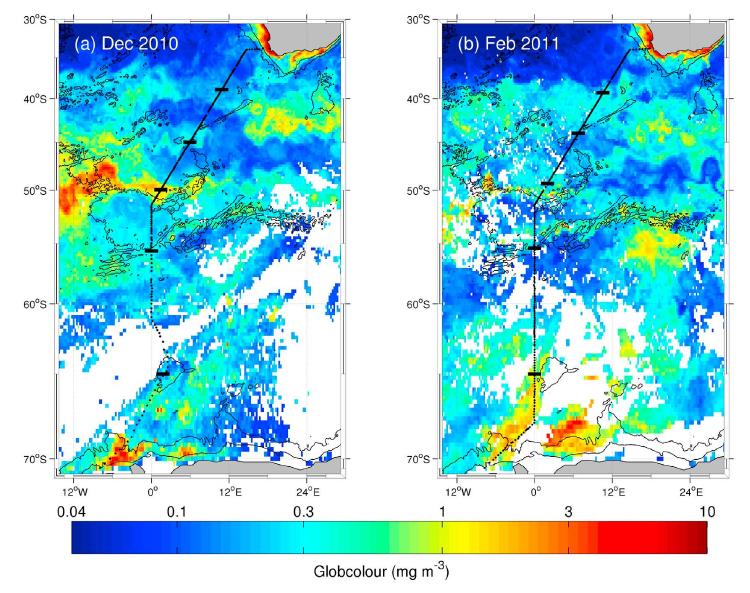Abstract
The canonical C/N/P ratio of 106/16/1 in phytoplankton has been instrumental in our understanding of ocean biogeochemical cycles and the development of numerical models as it couples the cycling of C to nutrients. However, this ratio can show marked variability and the processes driving these trends are still uncertain. There are, in particular, two main hypotheses to explain N/P ratios that deviate from 16/1. Firstly, it is postulated that species have specific, yet distinct, ratios that are averaged out over large spatial and temporal scales (Weber and Deutsch, 2010). Alternatively, varying optimal growth strategies resulting from physiological adaptation to environmental conditions could drive N/P variability, which simply averages out as 16/1 under current environmental conditions (Klausmeier et al., 2004). To address these hypotheses, we examine seasonal changes in the NO3- to PO43- ratio (via the geochemical tracer N*) on a section between Cape Town and Antarctica, where macronutrients are not fully depleted. Overall, we find roles for both species composition and physiology in driving the seasonal changes in N* depending on the location. Both mechanisms could act in concert and physiology was generally more important in regions undergoing large changes in phytoplankton biomass. Better understanding the driving mechanisms behind changes in the Southern Ocean N/P ratio is important as its signal is exported to low latitudes, having major impacts on global biogeochemical cycles.
Link to Full Article
